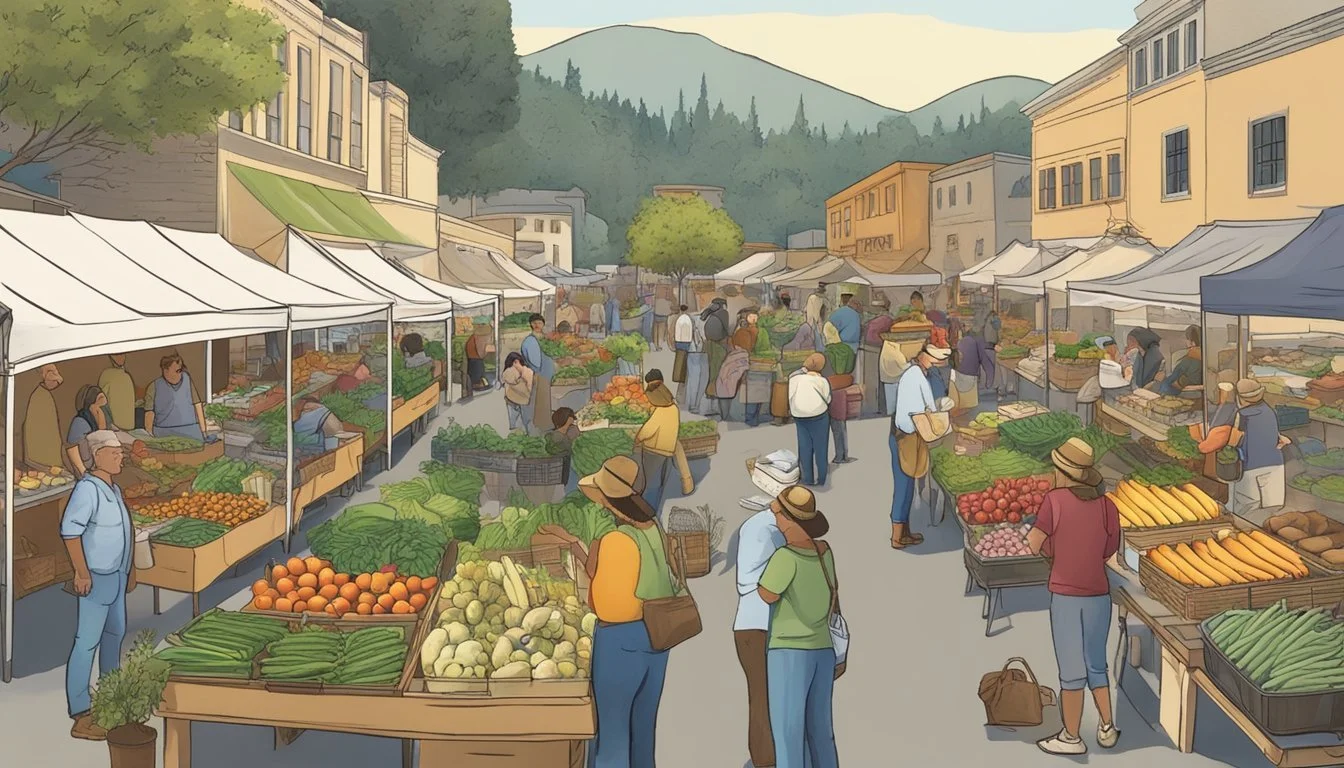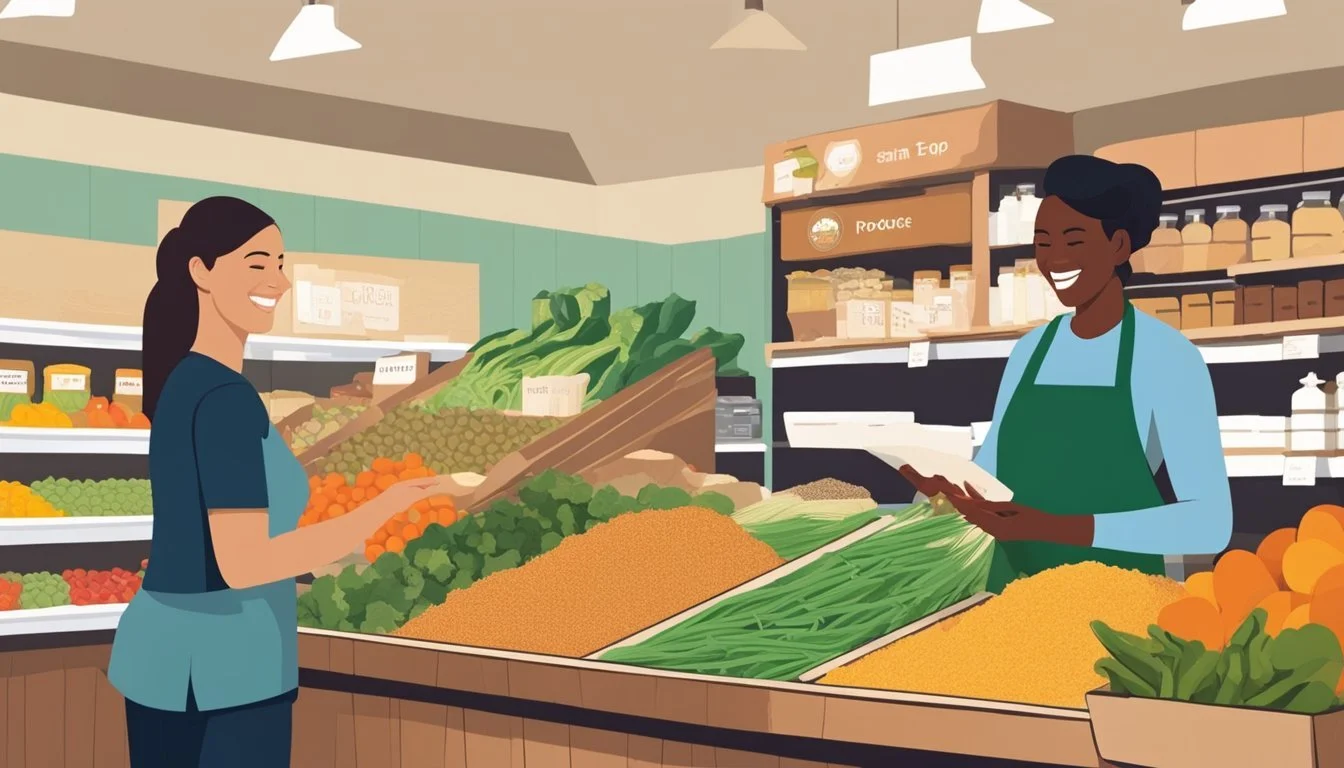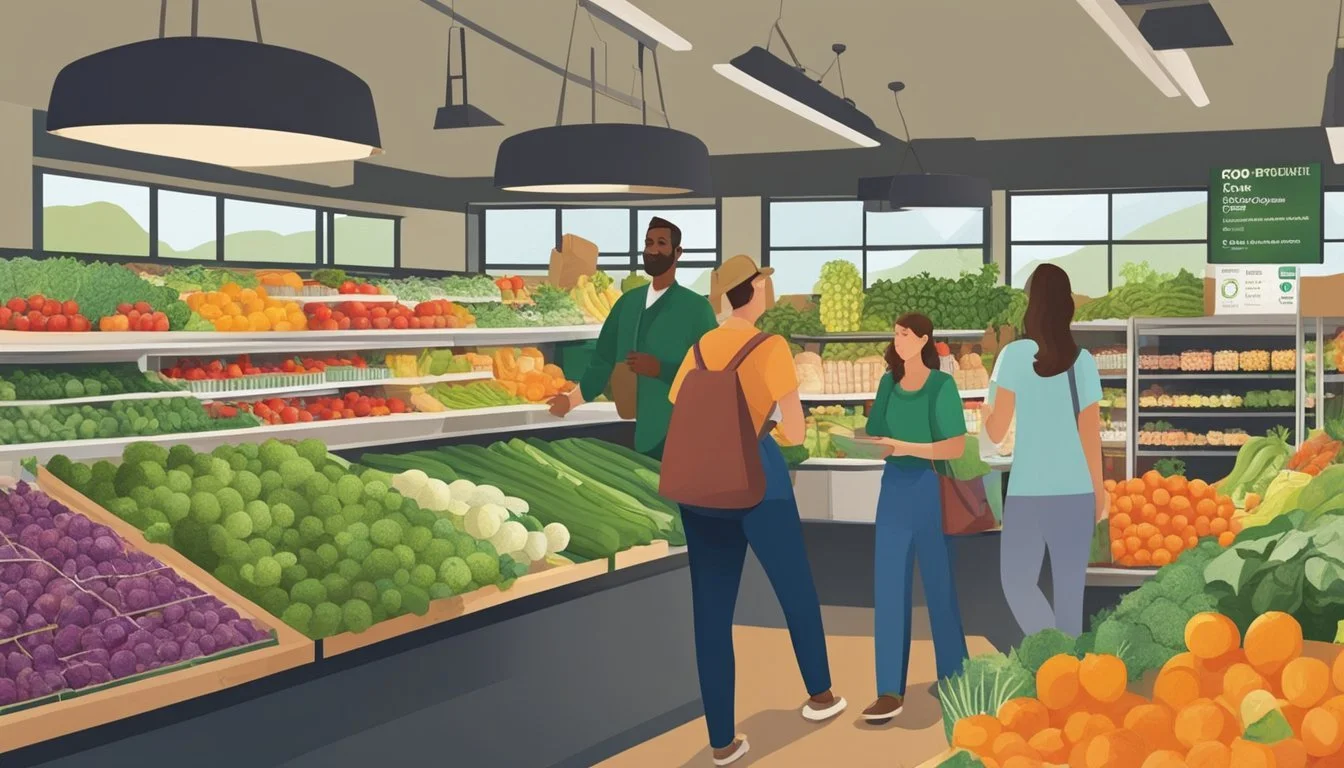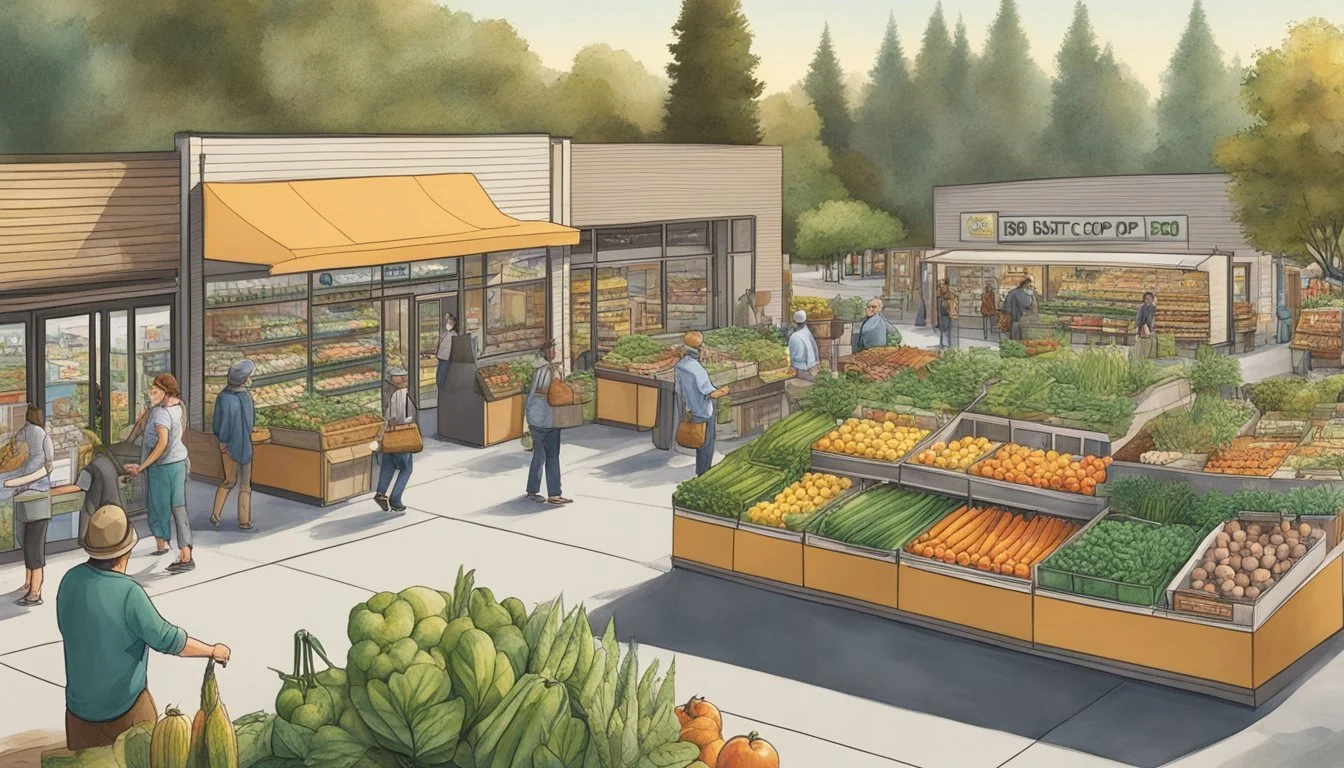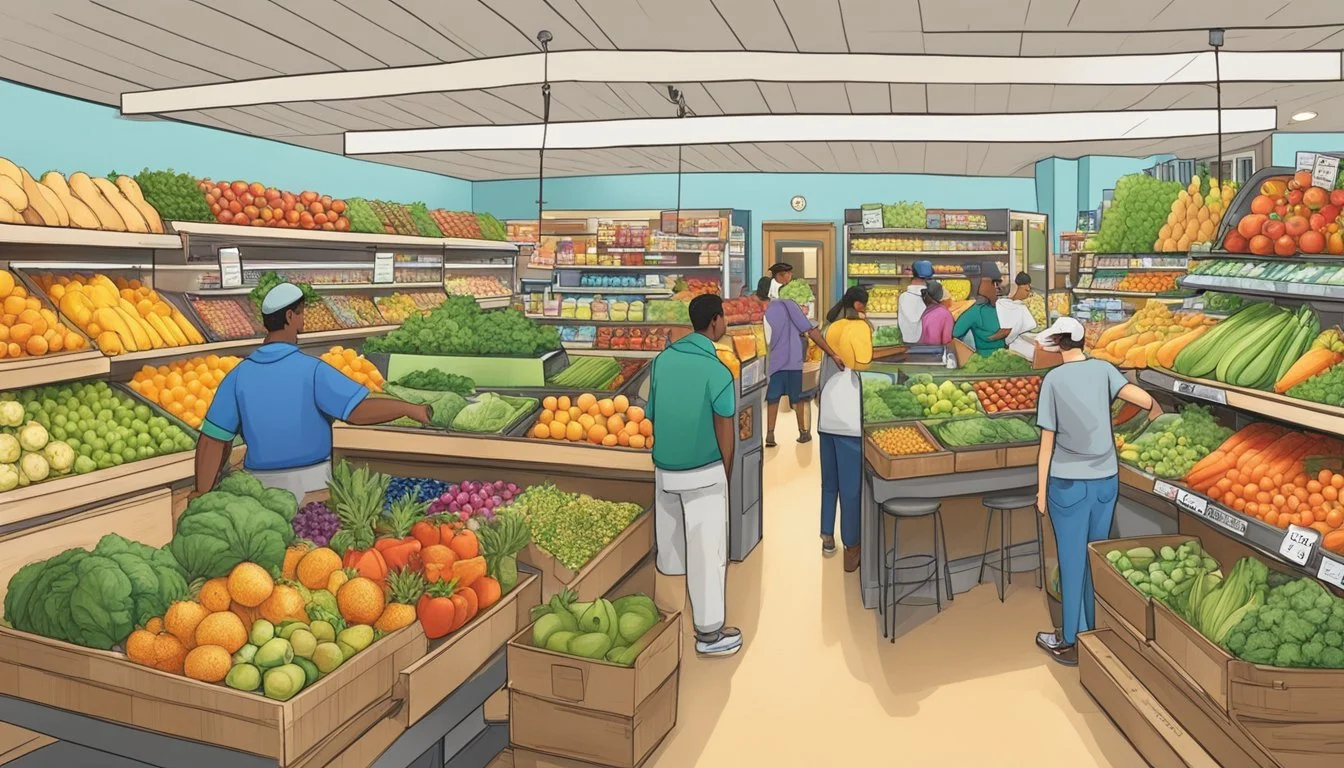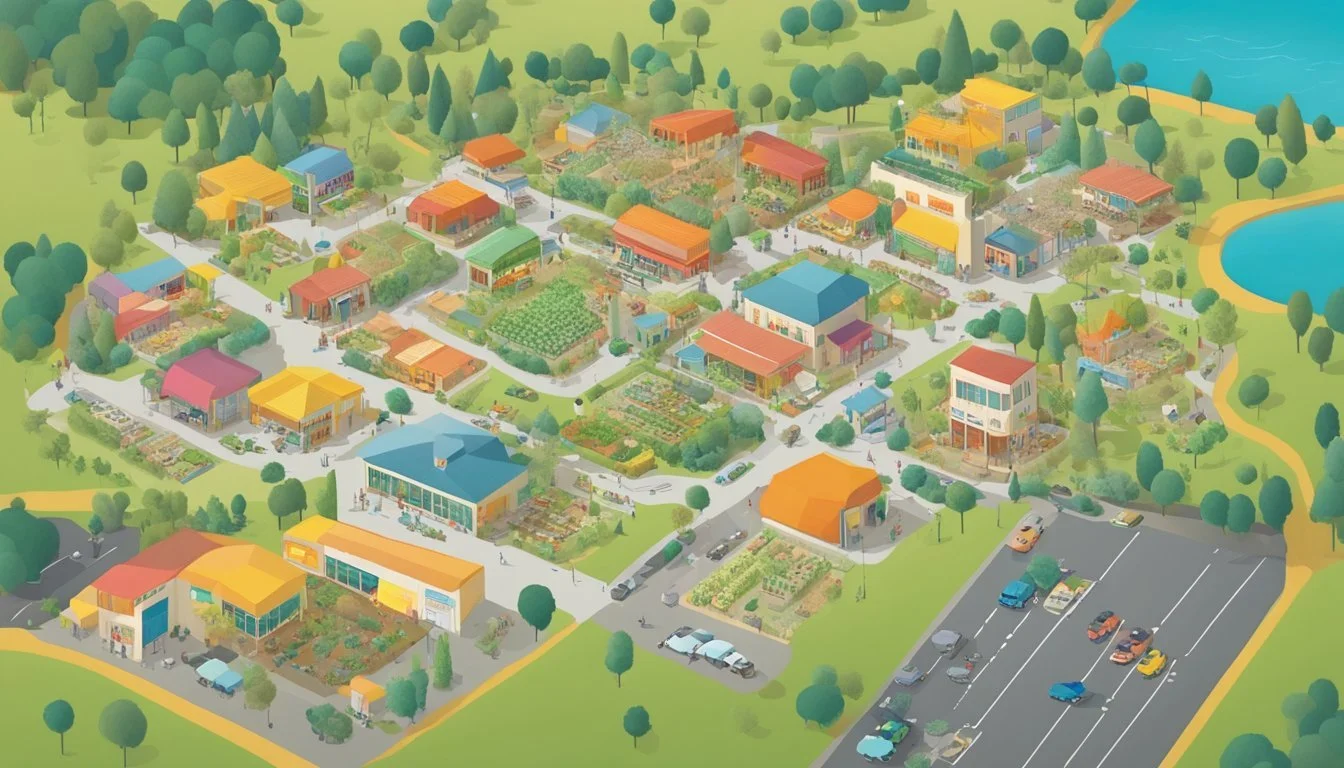Guide to Food Co-Ops in Santa Rosa, CA
Your Local Source for Sustainable Groceries
Santa Rosa, California, is home to a thriving community that values sustainable living, local agriculture, and access to healthy food. Food co-ops in Santa Rosa play a vital role in supporting this ethos by offering a centralized location for consumers to purchase local, organic produce, and other wholesome food products. These member-owned cooperatives not only provide an alternative to mainstream grocery stores but also contribute to the local economy and foster community engagement.
The Santa Rosa Community Market exemplifies the benefits of food cooperatives in the area, by not only providing affordable prices but also by emphasizing the importance of nutrition and overall well-being through their selection. They've been a fixture in the community for over four decades, championing the values of democratic operation and consumer education. This establishes food co-ops as more than just food retailers; they are cornerstones of community involvement and education on healthy eating habits.
Meanwhile, Oliver's Market, although not a co-op, aligns with similar principles by focusing on local and organic options and maintaining a straightforward approach to quality food and healthy living. Its presence in the Santa Rosa food scene underscores the community's penchant for locally owned businesses that prioritize real food and the overall health of its customers. Whether one is looking to support local farmers, seek out organic options, or participate in a food-centric community, Santa Rosa's markets and co-ops offer a wealth of resources.
What Is a Food Co-op?
Before diving into specifics, it's essential to understand that a food co-op is a grocery store where ownership is in the hands of its members, and it operates on cooperative business principles with member control at its core.
Principles of Cooperative Business
A food cooperative business is guided by a set of principles that distinguish it from traditional grocery models. These principles include:
Voluntary and Open Membership: Anyone can join the co-op without discrimination.
Democratic Member Control: Each member typically has one vote, ensuring equal input in decision-making.
Member Economic Participation: Members contribute equitably and control the capital of their cooperative.
Autonomy and Independence: Co-ops are self-reliant organizations controlled by their members.
Other principles include concern for community, cooperation among cooperatives, and education and information dissemination.
Benefits of Membership
Members of a food co-op enjoy various benefits, such as:
Voice in Operations: They participate in decisions regarding what the co-op sells and its sourcing.
Economic Rewards: Potential for reduced prices and yearly dividends based on the co-op's success and member patronage.
Community Engagement: Opportunity to foster a local food system and support community well-being.
Types of Food Co-Ops in Santa Rosa
Santa Rosa residents have access to a range of cooperative food purchasing options. Each co-op style offers unique benefits in terms of product selection, pricing, and community engagement.
Community Food Co-ops
In Santa Rosa, community food co-ops operate with a focus on providing high-quality food, often emphasizing organic and natural products. Santa Rosa Community Market is a notable example of a community food co-op, where local and organic produce is prioritized. These co-ops support local producers and foster a sense of community ownership and decision-making among their members.
Buying Clubs
Buying clubs in Santa Rosa offer members the chance to purchase food, including bulk and overstocked items, at discounted rates. These clubs may not have a physical storefront but instead operate through collective ordering systems where members make purchases together to benefit from bulk pricing. Buying clubs tend to be flexible, catering to the specific needs and preferences of their member base.
Organic and Local Produce
Santa Rosa, California, is a community deeply rooted in the appreciation for organic and local produce, reflecting a commitment to health and sustainability. From farmers markets to food co-ops, residents have access to an array of fresh, natural, and locally sourced food options.
Importance of Organic Foods
Organic foods are produced without the use of synthetic pesticides, genetically modified organisms, or artificial fertilizers. They support a healthier ecosystem by reducing pollution and promoting biodiversity. Consumers in Santa Rosa can find organic options at local markets such as the Santa Rosa Community Market and numerous local farms, indicating a strong preference for produce that promises minimal environmental impact and higher quality.
Health benefits: Organic foods often contain more beneficial nutrients, such as antioxidants, and are fresher due to the absence of preservatives.
Environmental impact: Organic farming practices are designed to conserve water, reduce soil erosion, and decrease pollution.
Benefits of Local Harvest
Locally grown food is harvested at peak ripeness, traveling minimal distances to reach Santa Rosa's consumers, ensuring maximum freshness and flavor. By supporting local producers, patrons not only get real, healthy food but also contribute to the economic health of their community.
Community support: Buying local helps to sustain family farms and contributes to local economies.
Freshness: Locally sourced produce reaches the consumer faster and retains more nutrients.
Santa Rosa's markets, such as the Santa Rosa Original Certified Farmers Market and Oliver's Market, are integral in connecting residents with a wide variety of local and organic produce, illustrating the city's dedication to real food and community well-being.
Product Range and Services
When exploring the food cooperatives in Santa Rosa, CA, customers can expect a diverse range of high-quality food products alongside equally impressive additional services designed to meet various needs.
High-Quality Food Selection
Food co-ops in Santa Rosa pride themselves on supplying a variety of fresh, locally-sourced groceries. Patrons will find organic produce that’s often grown by neighborhood farmers, leading to produce that reflects the regions’ agricultural richness. The selection extends to include health-oriented food items free from high fructose corn syrup and GMOs, standing by a commitment to nutritional value and food safety. Moreover, customers can take advantage of quantity discounts on bulk purchases, benefiting both their pantry and budget.
Additional Services Offered
The co-ops do not stop at food distribution; their services extend to include convenient delivery options, making it easier for members to receive their goods without leaving home. They also provide community support through educational programs about nutrition and sustainable living. Customer service is readily accessible for inquiries about eligibility for discounts, membership benefits, and assistance with navigating the product offerings. These services enhance the overall shopping experience, melding convenience with community-oriented values.
Shopping Experience
When entering food co-ops in Santa Rosa, customers can anticipate a welcoming atmosphere and attentive service that highlight the community-focused nature of these establishments. These aspects are integral to the food co-op shopping experience.
In-Store Ambiance
Upon entering a Santa Rosa food co-op, shoppers find themselves immersed in a community-centric environment. Local products often take center stage, providing an array of fresh and regionally sourced options. Whether one is looking for organic produce or artisanal Italian delicacies, the setting allows for a leisurely shopping experience. Yelp reviews typically mention the relaxed atmosphere and clean, well-organized spaces that make for an enjoyable visit.
Customer Service
Food co-ops in Santa Rosa are known for their friendly and informed staff. Customer service is a priority, with employees often going out of their way to assist shoppers or provide updates on new stock and bar selections. Personalized attention is a hallmark, reflected in positive Yelp reviews that frequently commend the staff's helpfulness and knowledgeability. Shoppers appreciate the genuine care and assistance they receive, which contributes significantly to their repeat visits.
Economic Impact and Sustainability
Food co-ops in Santa Rosa, CA, significantly contribute to the local economy and sustainability efforts. They provide a reliable market for local farmers and incorporate sustainable practices that offer value to both the environment and the community.
Supporting Local Farmers
Santa Rosa's food co-ops are vital in supporting local agriculture by purchasing directly from nearby farmers. This direct support not only helps to sustain the farmers' livelihoods but also contributes to a stronger local economy. Food co-ops often pay a premium for local goods, ensuring that farmers receive a fair price for their produce. This symbiotic relationship enhances the community's economic stability and keeps profits within the area.
Local farmers supported: Increased stability and market access.
Community benefits: Reinforcement of the local economy and savings staying local.
Sustainable Practices and Value
The food co-ops' commitment to sustainable practices extends beyond just economic advantages. They prioritize environmentally friendly operations and reduce waste through various initiatives like bulk purchasing and offering local, organic products.
Sustainability initiatives:
Recycling programs
Energy-efficient lighting and refrigeration
Minimal packaging
These practices not only lessen the environmental impact but also often lead to best value for customers. Consumers benefit from healthier food choices that align with a sustainable lifestyle, contributing to the overall wellness of the community.
Membership and Ownership
In Santa Rosa, CA, food co-ops are democratic organizations controlled by their members, who actively participate in setting policies and making decisions.
How to Become a Member
To join a food co-op in Santa Rosa, an individual generally needs to purchase a membership share. The specific steps often involve:
Submitting an application: The individual must complete a membership application form.
Buying a share: Membership usually requires purchasing a share, which is a one-time fee that can vary in price.
Paying an annual fee: Some co-ops might charge an annual fee to maintain membership status.
Note: Membership requirements and costs can vary from co-op to co-op.
Rights and Responsibilities
Membership in a food co-op often comes with both rights and responsibilities that are crucial to the organization's success.
Voting rights: Members typically have the right to vote in elections for the co-op's board of directors, as well as on important matters regarding the co-op's governance and policies.
Equitable economic participation: Members usually contribute equitably to, and democratically control, the capital of their co-op. At least part of that capital is usually the common property of the co-op.
Serving on the board: Members often have the opportunity to serve on the board of directors, influencing the direction and decisions of the co-op.
Volunteering: Some co-ops encourage or require members to volunteer a certain number of hours.
Control: Members have collective control over the co-op, ensuring that it serves their needs and adheres to cooperative principles.
Income: Surplus income generated by the co-op is often distributed among members in proportion to their transactions with the co-op, or it is used to improve the co-op's services.
Members are expected to support the co-op through regular patronage and engagement in co-op activities, helping to ensure its financial and operational stability.
Comparing Co-Ops with Other Stores
When examining the landscape of food shopping in Santa Rosa, CA, a fundamental distinction lies between co-operatives, known as "co-ops," and other retail food outlets such as health food stores and regular grocery stores. The differences manifest in aspects such as ownership structure, product selection, and community involvement.
Co-Ops vs. Health Food Stores
Ownership: A co-op operates as a collective, owned by its members who typically have a say in business decisions. Health food stores, on the other hand, might be privately owned or part of a larger corporation. The co-op's model fosters a greater sense of investment from its members, who often also enjoy particular benefits and savings, enhancing the community feel of the shopping experience.
Product Selection: Both kinds of stores prioritize organic and wholesome food options, but co-ops have a stronger focus on local sourcing. According to available data, local products at food co-ops can form about 21% of total sales, much higher than the national average for health food stores.
Co-Ops vs. Regular Grocery Stores
Variety and Pricing: Regular grocery stores maintain an extensive variety of products at various price points. Co-ops generally curate their inventory based on member needs and ethical sourcing, which can sometimes imply higher prices; yet, members often save money through discounts and dividends.
Co-Ops Regular Grocery Stores Member-owned and operated Corporation or privately owned Local products emphasized Broader inventory with national brands Member discounts, potential dividends Standard retail pricing Smaller, community-based decisions Larger, centralized decision-making
Community Impact: Co-ops tend to reinvest in their local communities and foster economic growth locally. In contrast, regular grocery stores might not have as much focus on local economic impacts, aiming more at profitability and operational efficiency on a wider scale.
In essence, food co-ops in Santa Rosa offer members a shopping experience that empowers local producers and directly benefits the community, whereas health food stores and regular grocery stores may offer wider selections with different business models and missions.
Events and Community Engagement
In Santa Rosa, CA, food co-ops serve as hubs for not only accessing nutritious, locally sourced food but also as venues for robust community involvement and education. They organize a variety of events aimed at engaging members and the local community.
Educational Events and Workshops
Food co-ops like Santa Rosa Community Market often host educational events and workshops designed to enhance consumer knowledge about food sources, preparation, and health benefits. These activities can range from cooking classes and nutrition workshops to discussions about sustainable practices. They aim to empower consumers to make informed choices and often feature experts in the fields of health, culinary arts, and agriculture.
Member Meetings and Social Gatherings
Community food co-ops are membership-driven organizations that value the input and participation of their members. Regular member meetings are crucial for discussing co-op governance, development, and community efforts. These gatherings are opportunities for members to connect, share experiences, and collaborate on initiatives. Social gatherings also foster a sense of community, allowing consumers to meet like-minded individuals while supporting the co-op's mission.
Navigating the Co-Op
Food co-ops in Santa Rosa, CA, offer a unique shopping experience focused on high-quality products and community values. They provide access to a variety of household supplies, as well as fresh, local food options.
Location and Access
When exploring Santa Rosa's food co-ops, shoppers will find the Santa Rosa Community Market, known for its competitive prices, and Oliver's Market, an operated chain featuring real food and real people. Accessibility to these co-ops is a key factor to consider, as their central locations make them convenient for both locals and visitors alike.
Santa Rosa Community Market
Address: [Santa Rosa, CA]
Oliver’s Market
Multiple Locations in Santa Rosa: [Specify Address]
A map can be immensely helpful for first-time shoppers or those unfamiliar with the area. Most co-ops also provide parking facilities, making the shopping experience smooth and stress-free.
Finding the Best Deals
Food co-ops are often praised for their economical prices and deals on high-quality items. They often have rotating specials and discounts. To capitalize on these deals, shoppers should:
Pay attention to Weekly Ads: Co-ops typically advertise their best deals in weekly flyers available in-store or on their website.
Join as a Member: Membership can offer additional discounts, voting rights, and special pricing to further benefit from the co-op's offerings.
Seasonal Products: Buying seasonal produce can also result in savings and peak freshness.
By familiarizing oneself with each co-op's discount schedule and membership benefits, smart shoppers can secure the best prices on their household needs.
Frequently Asked Questions
What food co-ops are located in Santa Rosa, CA?
Santa Rosa Community Market
Oliver's Market
Shelton's Natural Foods Market
Good Earth Natural Foods
Are the prices at Santa Rosa co-ops competitive? Yes, Santa Rosa Community Market, for example, is noted for having great prices in comparison to other co-ops both within and outside the area.
What are some of the environmentally friendly initiatives taken by food co-ops in Santa Rosa? The Zero Waste Food Ware Ordinance was established to address environmental impacts associated with single-use food service ware by promoting waste reduction.
Can one find organic and non-GMO products at these co-ops? Yes, local Santa Rosa co-ops like Oliver's Market offer real food with no high fructose corn syrup or GMOs, focusing on products that are natural and recognizable.
Is Santa Rosa recognized for a particular approach to food? Santa Rosa prides itself on its authentic farm-to-table cuisine. It's a part of the city's lifestyle and culture, prioritizing fresh, locally-sourced food.
Appendix and Resources
Santa Rosa offers a variety of resources for individuals seeking free food assistance, including fresh fruits, vegetables, bread, and groceries. Below are local food co-ops and resources where community members can find food aid and support.
Community Food Aid Locations:
Name Address Contact Services Community Food Resource Guide 3350 Coffey Lane #C (707) 575-3333 Free fruits, vegetables, bread FISH of Santa Rosa 2900 McBride Lane (707) 527-5151 Up to 3 days of groceries Harvest For The Hungry Garden 1717 Yulupa Ave N/A Food bank information Food Connections Resource Center 3990 Brickway Blvd. (707) 523-7900 Food assistance eligibility and application help YWCA Sonoma County Varied Locations N/A Free food pantries and hot meals
Eligibility and Hours: Many assistance programs require proof of identification and a Social Security number. It's recommended to contact the respective organization for detailed information on their operation hours and eligibility criteria.
Additional Support: Visitors can seek additional guidance from local markets like Oliver's Market for locally sourced and organic produce. Furthermore, the Redwood Empire Food Bank may be contacted for extensive support regarding food services in the region.
These resources provide critical support to those in need within the Santa Rosa community. Individuals are encouraged to reach out to these organizations to receive aid and learn more about the services provided.

